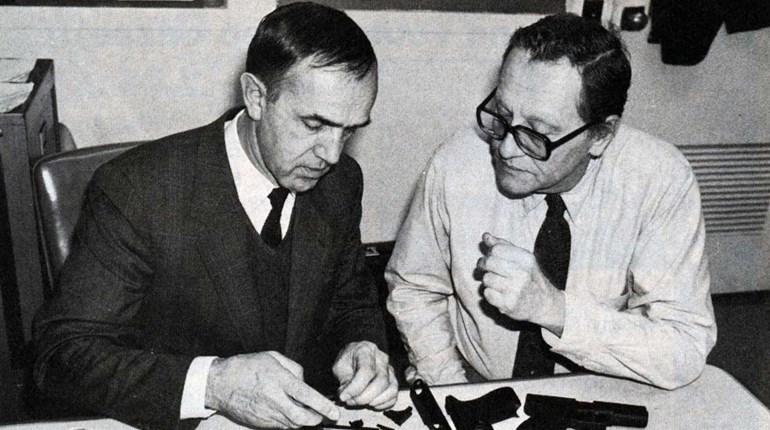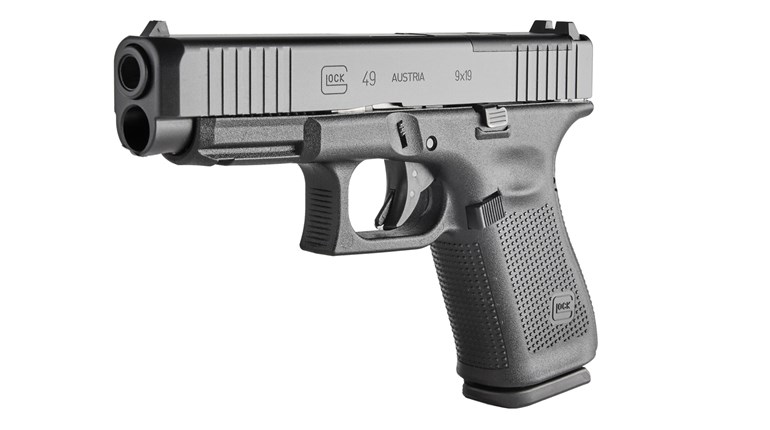
Jeff Gonzales is no stranger to NRA American Warrior readers. As a U.S. Navy SEAL and widely sought-after instructor, he’s also well known as the brains behind Trident Concepts LLC. Specializing in personal protection tactics and training for armed and unarmed conflict, Gonzales and his trainers have worked around the globe preparing students ranging from Special Operation Forces to civilians to meet the challenges of whatever “worst-case scenario” finds them.
Jeff may know more about Glock pistols in extremis than anybody. About the G19 in particular, we suppose Gaston Glock himself is the only real competition. Teaming with Robar, Jeff designed the TRICON™ ProCarry G19, and we reviewed his personal firearm in AW #20. Long story short, it dazzled us. So perhaps it’s no mystery why Jeff was the first person who came to mind when the Marine Corps recently approved the Glock G19 for issue to MARSOC personnel.
NRA American Warrior: Any buzz out there in your circles about the Marine Corps nod to G19 availability for MARSOC?
Jeff Gonzales: Not a lot, but certainly rumors. Actually, there’s a little disbelief, I think. It’ll be a different story when the pistols actually start reaching the MARSOC guys.
AW: Do you think any particular event or set of circumstances led to the decision?
JG: I don’t think there’s anything specific, and obviously can’t speak for the Marine Corps. But for one thing, there is a general recognition of the efficiency of training from a time and resources standpoint: A striker-fired pistol is easier to train to a higher standard of performance than a double-action pistol like the current M9.
AW: Everybody knows the services are looking for an M9 replacement. Any larger implications in that regard?
JG: That’d be pure speculation, but the special operations community tends to lead the way, so it will be interesting to see what happens. Draw your own conclusions, but note that the Marines recently “declined” to add the updated M9 (Beretta) to their inventory.
AW: Did you have any clues that the Marine Corps was headed in this direction?
JG: <<Laughing>> Not really. But we have the honor of working with a variety of Special Operations Forces in all the branches, and the training we provide can sometimes lift the covers just a little.
AW: Reprise for us why the G19 is a good fit for MARSOC.
JG: I’d be a little off the reservation to be that specific; mainly, I’d hate to create even the impression of speaking for MARSOC. But the reasons the G19 is a good weapons system apply to Marine Special Operations as they do to others. Durability is the heaviest hitter. It has been around for literally decades and has proven to be low maintenance, and an obvious corollary to this is high durability—different sides of the same crucial coin.“Second is a subset of durability, and that’s reliability: The G17 and G19 are the “gold standard” in this sense”
Second is a subset of durability, and that’s reliability: The G17 and G19 are the “gold standard” in this sense. Under the most arduous—even completely contrived—conditions, they just Energizer-Bunny on.
Third is capacity: 15+1 in a G19-sized firearm provides the ability to go deep into a magazine. Marry that up with a marksman, and that is a lethal combination.
Fourth: accuracy. You can make this claim about almost any modern pistol—they are more accurate than most shooters. But in my experience, the ability to hit with the G19 as a function of size and capacity is unparalleled.
Finally is end-user maintenance. Any gun is going to have small parts breakages, and any firearm will eventually wear out. The frame, slide and barrel are Glock-specific, but the rest are OEM parts, easily obtained. The key is that virtually everything is field-replaceable in a way almost no other firearm can match. This has a huge beneficial effect on both service life, as well as the payback on invested training dollars. Sounds a little corny, maybe, but it’s also good value for the taxpayer who must support military operations: If there’s no compromise on the “sharp end,” why not be as cost-conscious as possible? And with the Glocks, there’s simply no compromise that we’ve been able to identify.
AW: Can you compare/contrast the Glock 19 with the relatively new CQBP Colt 1911-pattern pistol?
JG: It’s a good system: powerful, reliable—especially in the sense of being battle-proven—and the Colt execution was, in my opinion, great. If there are issues, they relate to what we’ve already covered in terms of field maintenance and interoperability (ammunition, for instance).
AW: Glock recently released several models preconfigured for red-dot/“reflex” sight installation/adaptation. Especially considering how pervasive this technology is on long arms, do you think we are just around the corner for widespread use on pistols among Special Operations/Special Forces personnel?
JG: This is already happening, indeed has been for several years. The results are bound to filter down and out from SOF. This will occur as doctrine is developed and we figure out the best way to train to the technologies.
AW: Any comments on the applicability of reflex sights on handguns more generally?
JG: This is a great solution for eyesight issues that catch up to us all, but it’s hard to turn that into a blanket statement.
I think it’s great that the Marine Corps is moving in this direction—to a high cap, striker-fired, 9 mm pistol. Durability and reliability are the big payoffs, and the MARSOC guys are certainly well positioned to take full advantage.
AW: Thanks, Jeff. We’re hoping to see the rumored TRICON™ carbine before too long. Anything there?
Jeff?
JEFF!?!
<<dial tone>>





































